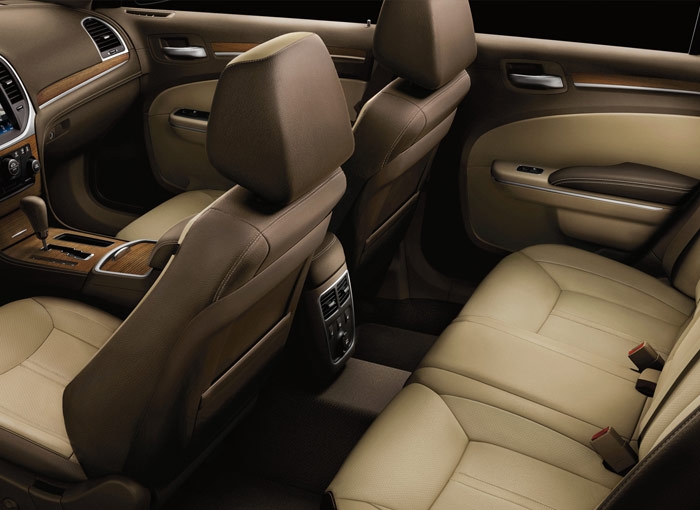
South Africa’s automotive leather interior industry is in trouble.
Employment at tanneries and sewing plants has been cut in half from 9 242 people in 2005 to 4 806 in 2015, says industrial value chain economist David Bezuidenhout.
Bezuidenhout has been a consultant to the auto leather industry for more than ten years.
Tanneries and sewing plants have also seen export sales of sewn car seat sets drop from R2.76-billion in 2005 to a mere R849-million in 2014, he notes.
Bezuidenhout says the industry’s decline has also been evident in the number of operations closing their doors in recent years.
In 2007, Eagle Ottawa finished leather tannery closed and, in 2008, the Bader sewing plant followed.
In 2010, the Feltex finished leather tannery closed.
This was followed by a string of misfortunes, including the Iceland volcanic ash cloud disrupting flights to Europe, the prolonged strikes of 2010 and 2013 in the South African automotive sector, and the realisation that government’s new Automotive Production and Development Programme (APDP), implemented in 2013, would not provide the same level of prolonged support to the leather industry as its predecessor, the Motor Industry Development Programme (MIDP), had been doing, says Bezuidenhout.
These events added to an earlier trade tussle with Australia regarding leather exports from South Africa, which saw the industry lose R250-million in exports a year to Australia around 2006.
The continued misfortune in the industry last year saw the closure of the Zenda and Mario Levi finished leather tanneries, says Bezuidenhout.
“The industry could have been a R10-billion- to R12-billion-a-year business by now, but a prolonged period – probably five or six years – of uncertainty did some serious harm.”
Vehicle manufacturers have been steadily replacing South African leather seat supply with supplies from other competing suppliers.
Over the last few years, the local industry has lost a number of global model export contracts, including supplying the Mercedes-Benz E-Class and C-Class, the BMW 5 Series and 7 Series, and Land Rover with leather seat sets.
What remains of the domestic downstream value chain includes the Seton Automotive Leathers and Bader Leather tanneries, as well as the Automotive Leather Company, Lear, Aunde and Johnson Controls sewing plants.
“An additional problem is that the industry is a just-in-time industry, which means we fly the seats from South Africa to a number of global plants. Any small hiccup can disrupt the product flow,” explains Bezuidenhout.
“However, this also means that 14% to 15% of the South African end price is logistics costs. We can deliver the seats faster than Hungary, for example, which drives it to European plants, but that industry’s logistics costs are only 1% of its end price. The South African industry needs support, as well as ways to offset these costs.
“We have lost market share in leather seat sets to a number of countries, such as Eastern Europe, India and Brazil.”
APDP Effect
While the MIDP considered local content as the main qualifier for government support, the APDP is value-add driven.
However, material makes up a high percentage of the input costs of material-intensive industries, such as automotive leather and catalytic converters, which uses platinum-group metals, and this drives down the value-added percentage for these industries, making them vulnerable, says Bezuidenhout.
“This means vehicle manufacturers sourcing locally made leather seat sets see much less benefits under the APDP than under the MIDP, which influences their decision to source the sets locally.”
In an attempt to counter this, the catalytic converter and leather seat industries have been labelled as vulnerable under the APDP, with some leeway provided in terms of benefits received but, unfortunately, only for a limited period, which is not sufficient to allow for recovery, notes Bezuidenhout.
Value Chain
The automotive leather value chain starts at the abattoir, where only unblemished hides are selected to enter the process to become leather seats.
This green hide then enters the wet blue process, which requires careful environmental control, as this is where the hides are first chemically treated.
Following this first processing of supply, the hides are dyed, retanned, dried, painted, embossed and cut into auto leather cut kits.
The final step in the design is the creation of leather car seat sets, which includes perforation, embroidery and sewing processes.
South Africa has a sophisticated, world-class industry, says Bezuidenhout.
“It took 10 to 15 years to develop the value chain.
“But, we are under threat of losing this value chain. And our valuable wet blue hides are literally flying out of the country to Eastern Europe, which is why the Department of Trade and Industry has recommended to the National Treasury to impose an export levy on these exports.”
What to Do?
The automotive leather industry is a “very good example” of what a geared-up value chain can do with the country’s raw materials, says Bezuidenhout.
“It is worth saving the industry, which took years to build up and which is highly labour intensive.”
The industry is lobbying government to ensure that the APDP review, currently under way, guarentees that the proposed initial level of support for vulnerable component industries runs “for as long as the APDP runs, and not be scaled down after two or three years”, he notes.
The current APDP is scheduled to come to an end in 2020, but government has already indicated that the programme will be extended beyond this date.
“Government should consider increasing the APDP benefits to the automotive leather industry,” adds Bezuidenhout. “It is vital for a sustainable recovery of the industry.
“Simultaneously, we must ensure sufficient feedstock to the local automotive leather industry of automotive-quality wet blue hides.
“Brazil, India, Tanzania and Namibia, to name but a few, have banned the export of wet blue hides, and we can simply follow their example.”
These changes should provide sufficient long-term certainty to lure vehicle manufacturers back to the local automotive leather industry, says Bezuidenhout.
“It is a roller-coaster ride at the moment. There is no security in the industry and it is being forced to retrench highly skilled people.
“The industry is producing at 40% of its capacity. It does not need something major to thrive – only a tweak here and there.”
Source: www.EngineeringNews.co.za

I fully agree what Mr. Bezuidenhout says. Many sewing leather and tannery companies close down due to high cost. Johnson Control ( Adient ) & Automotive leather company moved to Lesotho. 2015 Automotive Leather Company moved to Bulgaria . The only advantage which these companies had was low cost labour rates compared to South Africa if not it would have closed down to. Thousands of people have lost their jobs due to closing of doors of these companies. So many skills are out there to revive these business. SA Government preaching everyday how they can provide funds to start businesses. The leather industry is dying in SA. Seton change to Pangea which is to say the only leather seating supplier in Gauteng. The ARDP should be seriously looked at by government to make it easy for leather sewing companies in SA and revive leather sewing industries. I will make my voice heard with government regarding this industry. Why must SA import hides from , Brazil, Argentina and all other countries where it can be done in SA. Whatever politics there are put aside I know it won’t be easy. If SA want to reduce unemployment they should seriously look at this industry. Many skilled people out there who is unemployed or employed by other companies. Lear Corporation , Yanfeng , Feltex Trim are dominating the SA market currently. I would really like to see the leather sewing industry can be resurrected from its partially death or death. This can be done. If people can go to the moon why can’t this industry not come to life again. Yes everything is about cost that what killing this business. Companies with big financial & influence support surviving and the others dies a slow death of dies completely. South Africa can revive this Industry! Its Possible. Let this industry create jobs for people of South Africa.